A one-day exhibition on the tracks of the operating children’s railroad in Hrazdan Gorge, Yerevan, Armenia, held on May 15, 2023.
Looking at the dates of the construction of the railroad (1937) and the tunnel (1956), we can see the broader context. 1937 was the year of the beginning of the great terror in USSR, when thousands of people were arrested and executed without trial. In 1956, when the tunnel was built, there was a debunking of Stalin’s cult of personality, which gave hope for freedom and long-awaited change.
But the tunnel, in which the exhibition took place, is a sham: it is built on a flat place and has only a demonstration and entertainment function.

Artyom Go, “Warstraction”, videoinstallation.
Thus, the half-abandoned Stalinist recreational project turns out to be a starting point for retrospective correlation and naturally immerses the thoughtful viewer in a narrative frame that fixes us in different contexts: war, emigration, the experience of homelessness, vulnerability, projections of the future, resistance.
The tunnel tears through the fabric of time and transports us there and back again
Participants: Arnold Veber, Artyom Go, Daria Goffman, Roman Karman, Maresiy Ivashchenko, Egor Kirillov, Herman Orekhov, Igor Samolet.
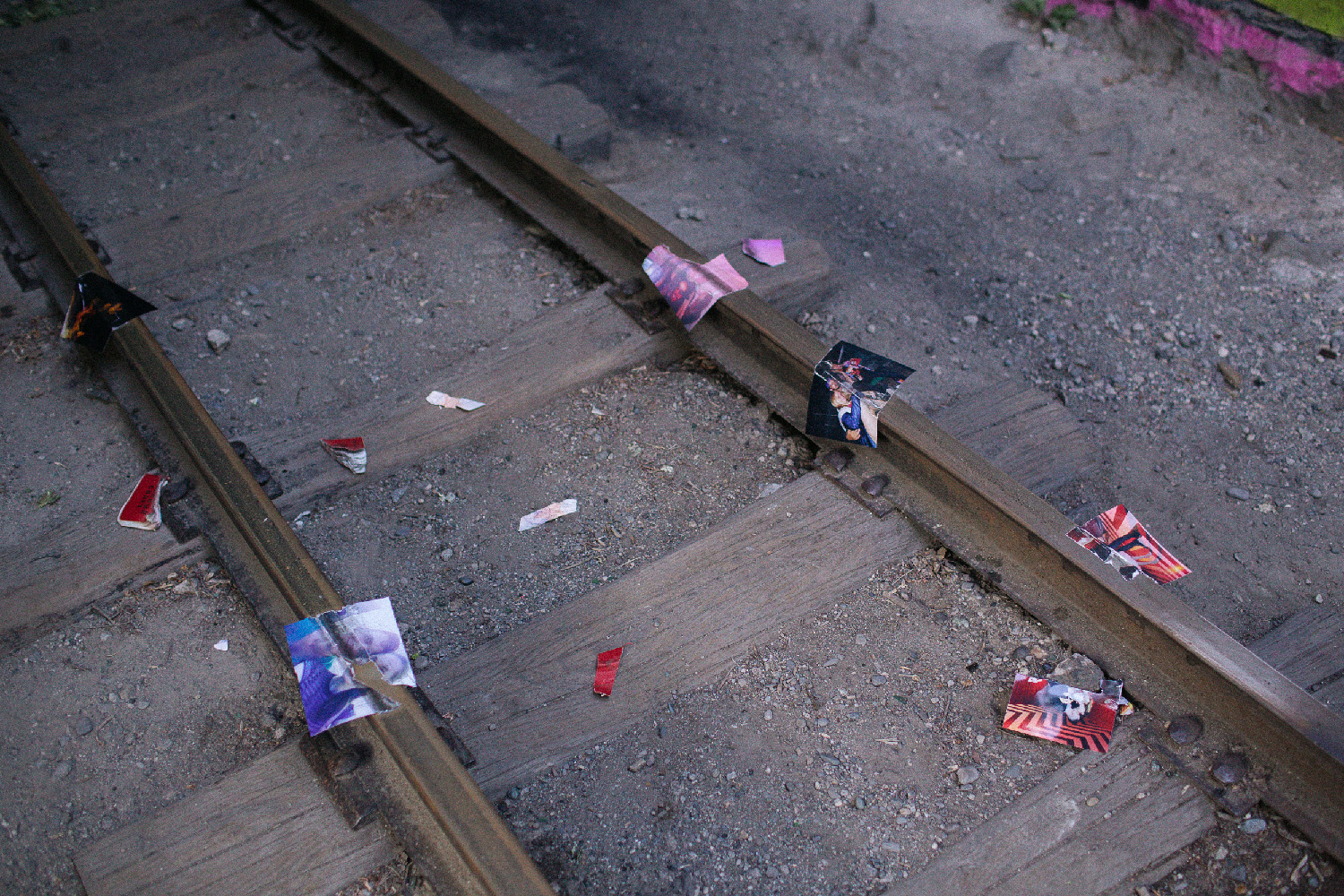
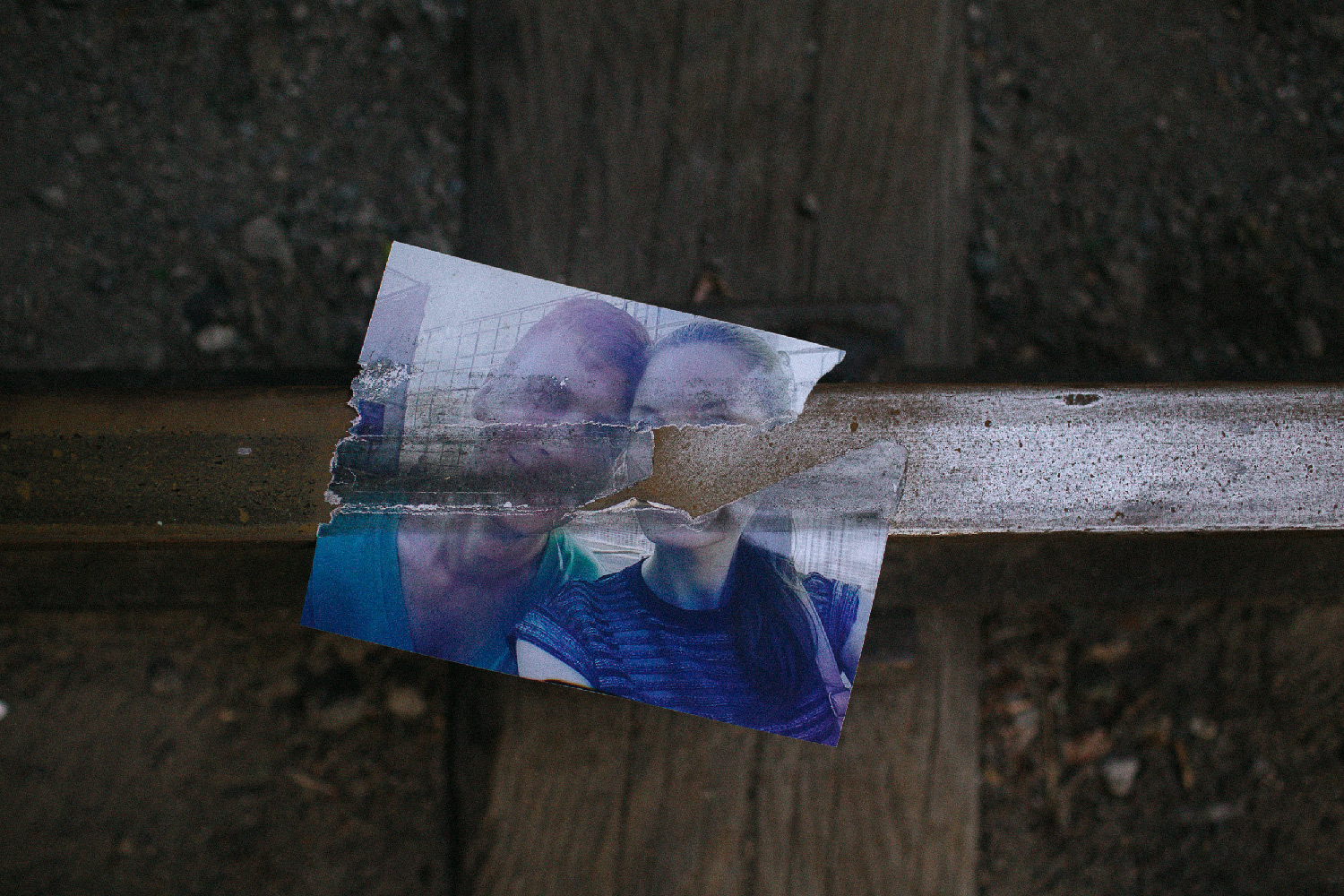 .
.
Roman Karman, “Awakening”, view of the installation. Photographs and documents from life before the war and emigration crushed by train.
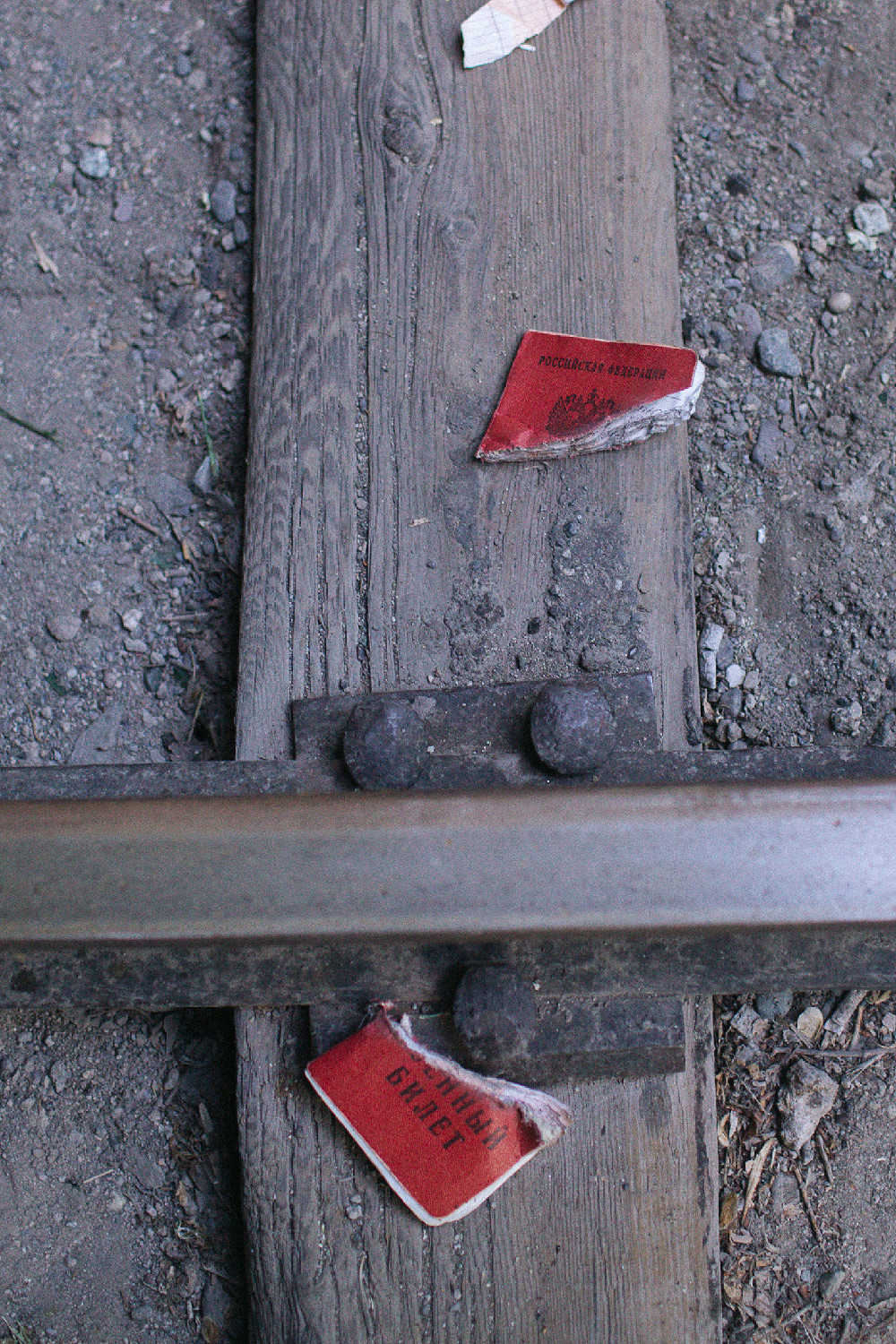
Roman Karman, “Awakening”. Military ID crushed by train.
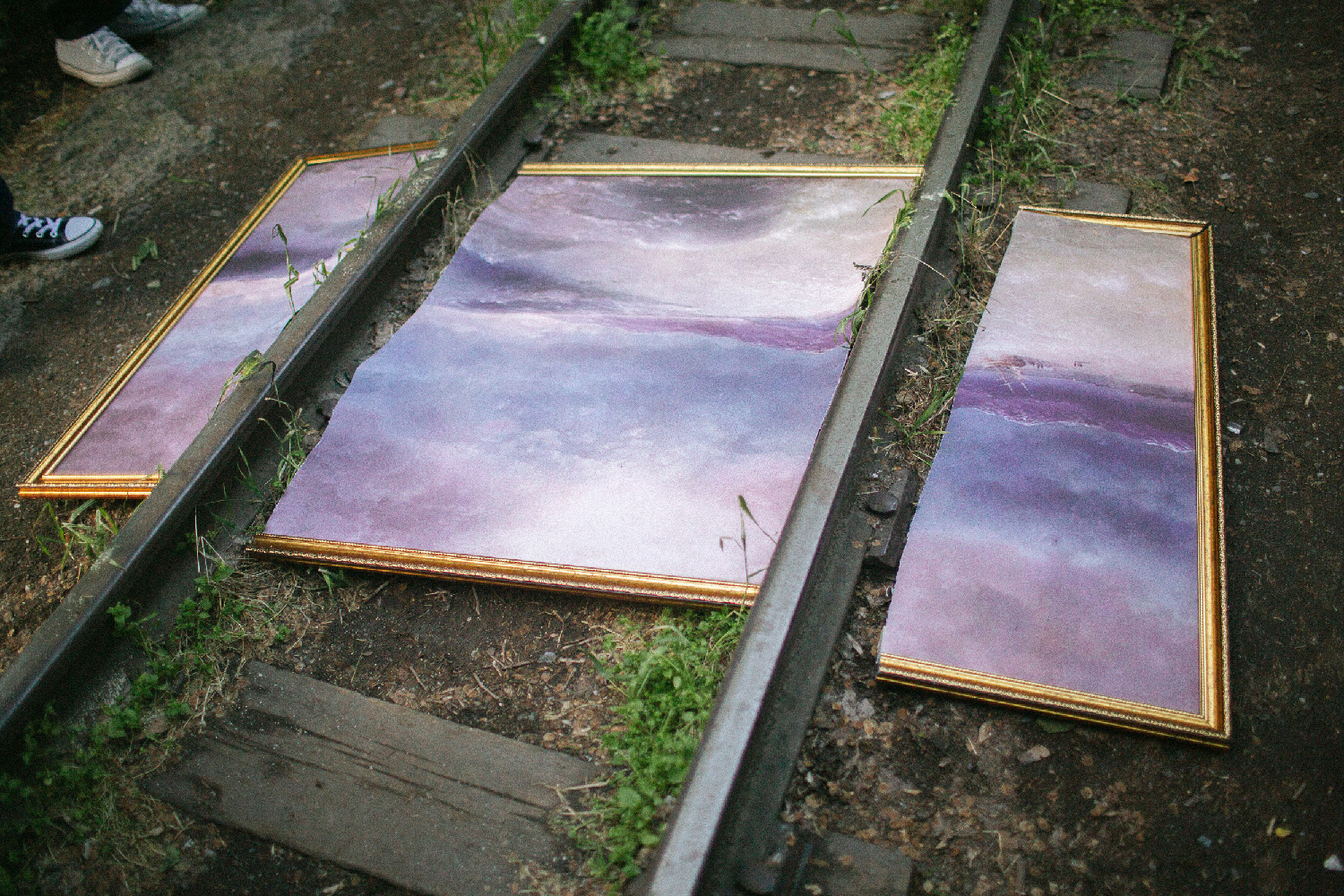
Igor Samolet, “Aivazovsky”, installation.
One of the great marinist’s paintings seemed to be cut into 3 parts. This refers to the disputes about Aivazovsky’s nationality during the Russian-Ukrainian war. One side claims that he was a Russian painter, the other side claims that he was Ukrainian, Armenia considers him Armenian.

Daria Goffman, “Fading away”. Object.
The glowing letters were quickly extinguished due to the depleting batteries.

Herman Orekhov, Maresiy Ivaschenko “The groom has arrived”. Installation.
The name of the installation refers to the famous Russian horror movie directed by Alexei Balabanov “Cargo 200”, in which a policeman kidnaps and rapes a girl. At one point, a cargo plane carrying Soviet soldiers killed in Afghanistan arrives in the provincial town where the action takes place. The policeman recognizes among one of the dead the girl’s beau, opens the coffin and puts the corpse in the room where he imprisoned her with the words “The groom has arrived”.
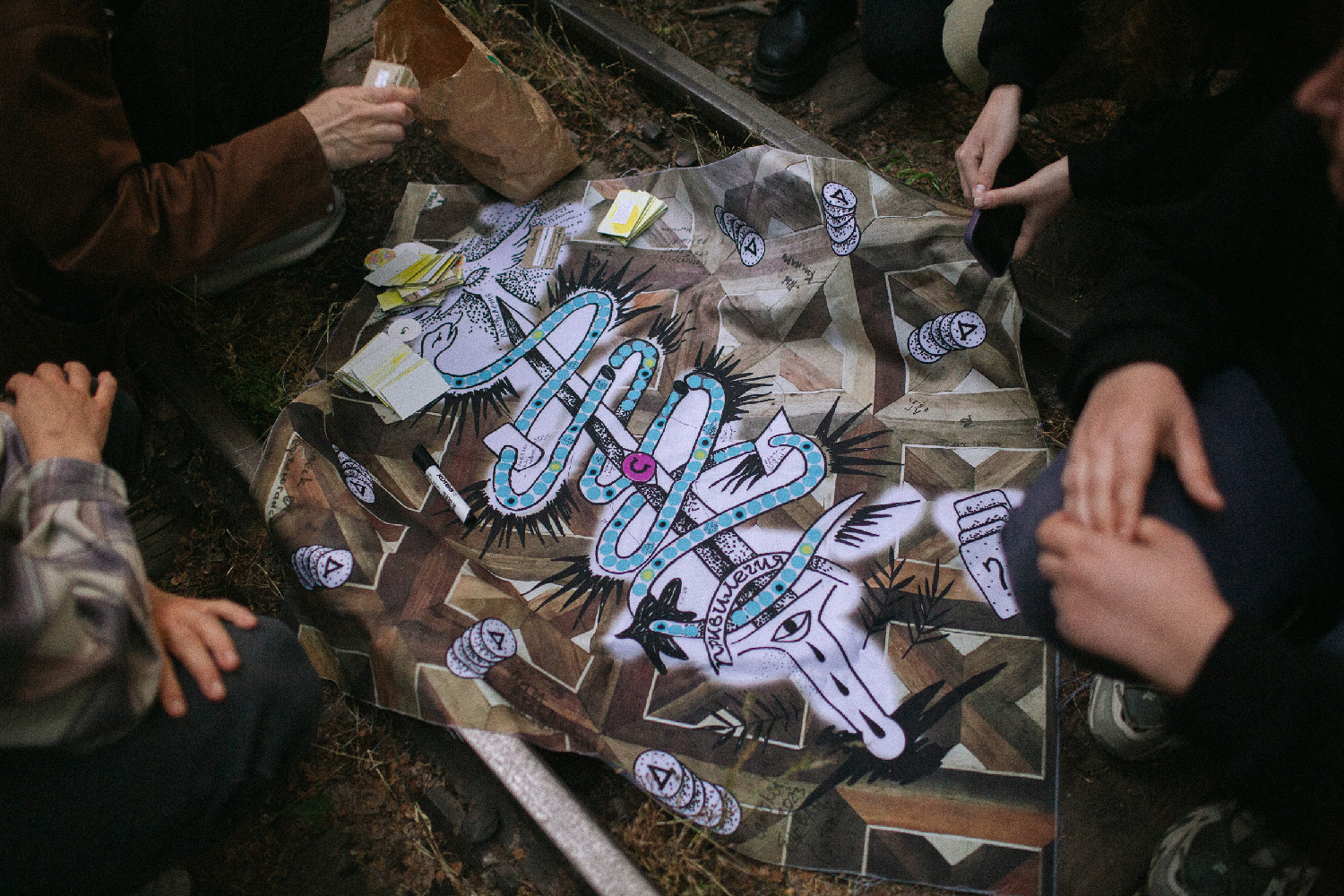
Igor Samolet, the board game “Privilege”.
The artist designed the game so that a Russian emigrant, answering (rhetorical) questions about his attitude to what is happening advances across the field and moves either towards Russia or even further away from it.


Egor Kirillov, combined photographs from the artist’s life before emigration and immediately after.
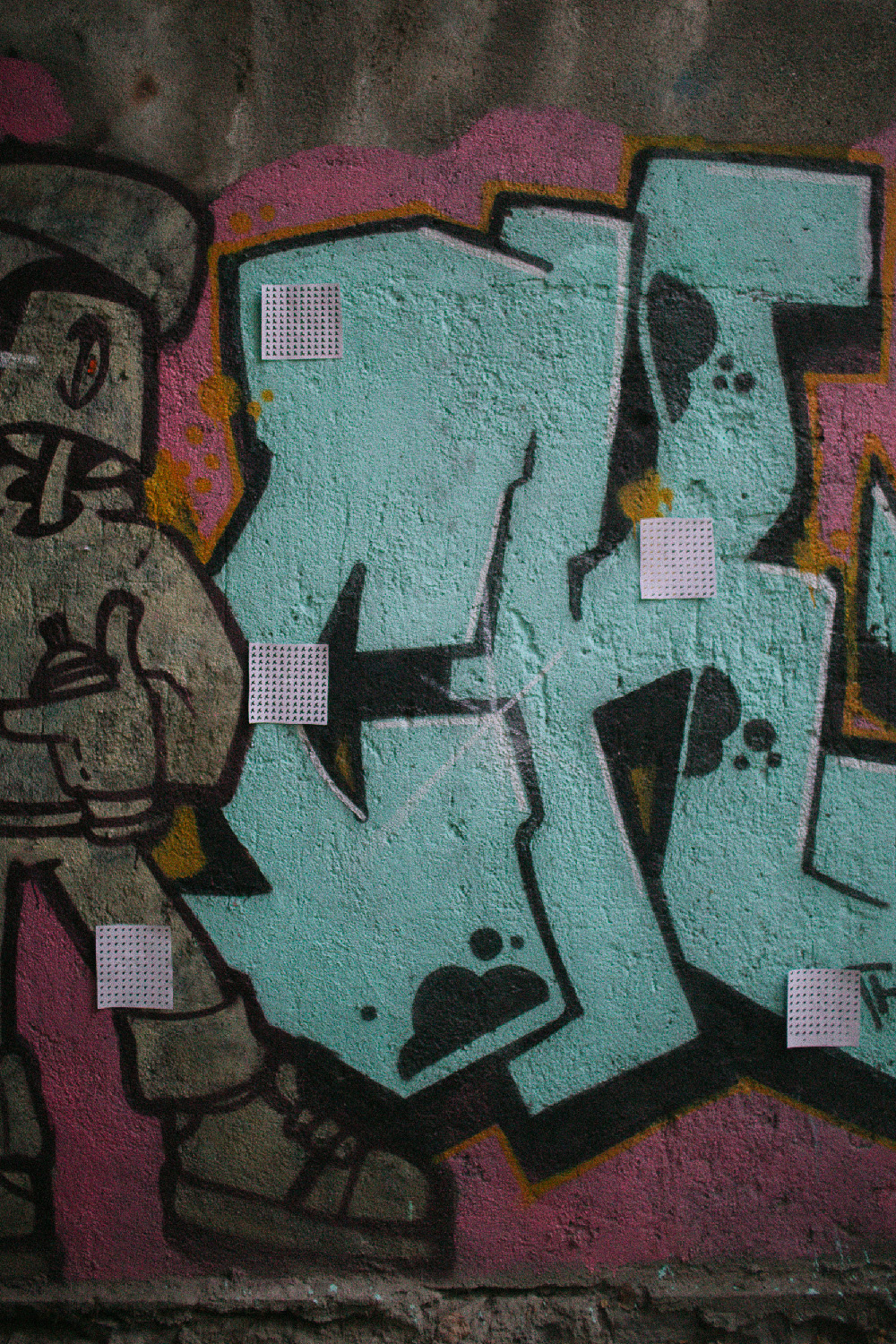

Arnold Veber, “Limbo”, installation.
Artist’s observation of himself and his relationship to the contexts that surround him as in recent years he have been feeling disconnected from the world, like a pattern that does not coincide with the patterns around him, but those patterns make changes inside him, so he is a superject. Artist means a notion from Alfred North Whitehead philosophical theory, where a superject is the emergent actual occasion from which value is abstracted.
Katja Zeppel, founder of the ODRA platform, writes about this exhibition this way: “Most of the projects were focused on the processes and experiences of adapting to a new place, breaking the familiar flow of everyday life through no fault of their own. And one of the big questions is, why is this happening over and over again? At this site-specific exhibition, all the objects were deformed: torn, cut, broken. The road as a mode had walked over them, leaving a scar on each one. The railroad is always a witness to time. Powerful, ingrown sleepers keep secrets of the past that are easy to stumble over.”
